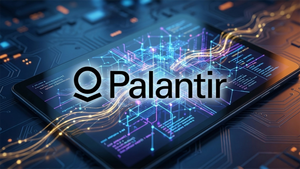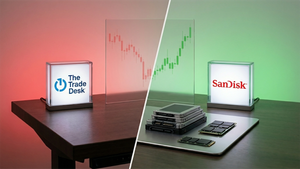
Synopsys (NASDAQ: SNPS), a global leader in electronic design automation (EDA) and semiconductor IP, is embarking on a significant strategic review process that includes a planned 10% global headcount reduction by the end of fiscal year 2026. This comprehensive initiative, announced amidst recent financial headwinds and the integration of its monumental acquisition of Ansys (NASDAQ: ANSS), aims to bolster operational efficiency, streamline processes, and reallocate resources towards higher-growth opportunities.
The move comes as the company navigates a challenging market landscape, including a significant drop in its Design IP segment and revised financial guidance for fiscal year 2025. This bold strategic pivot is designed to re-energize Synopsys' core business, accelerate synergy realization from the Ansys merger, and ultimately restore investor confidence by reaffirming its commitment to long-term profitability.
What Happened and Why It Matters
Synopsys' strategic review was initiated even before the completion of its $35 billion acquisition of Ansys, signaling a proactive approach to optimizing its operational framework. The review has scrutinized management layers, internal processes, systems, and the integration of artificial intelligence (AI) tools, culminating in the decision to reduce its global workforce by approximately 10% over the next two fiscal years. This reduction is explicitly aimed at enhancing efficiency and enabling reinvestment into Synopsys' core product portfolio, particularly in areas poised for future growth.
The immediate backdrop to this announcement includes a mixed financial performance, with Synopsys reporting third-quarter fiscal year 2025 revenue of $1.74 billion, falling short of analysts' expectations of $1.77 billion. Adjusted earnings per share of $3.39 also missed the projected $3.74, leading to a substantial 35% decline in the company's stock price. The Design IP segment, a critical component of its business, saw an 8% year-over-year decline in Q3 FY2025, with a "transitional and muted year in IP" anticipated for FY2026. This underperformance is attributed to U.S. export restrictions on chip design software impacting Chinese customers, the withdrawal of a major foundry client (speculated to be Intel (NASDAQ: INTC)) from an IP development project, and internal resource allocation missteps within the IP unit. The Ansys acquisition, while strategically vital for long-term diversification, has also introduced initial integration costs. Consequently, Synopsys has lowered its full-year fiscal year 2025 guidance, projecting revenue between $7.03 billion and $7.06 billion and non-GAAP earnings per share between $12.76 and $12.80.
The key players involved are primarily Synopsys' executive leadership, who are orchestrating this strategic overhaul, and the employees who will be directly impacted by the headcount reduction. Ansys, as a newly integrated entity, also plays a crucial role as the synergy realization from its acquisition is a primary driver for the workforce reduction. The market's initial reaction was swift and negative, reflecting investor apprehension regarding the immediate financial misses and the implications of a significant workforce reduction. However, management has reaffirmed its commitment to achieving a long-term operating margin in the mid-40s, banking on the projected $400 million run rate in cost synergies by the third year post-acquisition to offset the short-term pain. This strategic review, despite its immediate challenges, signifies a focused effort by Synopsys to streamline operations and fortify its market leadership in the long run.
Shifting Sands: Identifying the Winners and Losers in Synopsys' Strategic Reset
Synopsys' ambitious strategic overhaul and significant headcount reduction, coupled with the integration of Ansys, are poised to send ripples across the electronic design automation (EDA) and simulation software landscapes, creating clear winners and losers among various stakeholders.
Synopsys (NASDAQ: SNPS) itself, and its shareholders, stand as potential long-term winners, provided the strategic review and Ansys integration are executed effectively. The planned 10% workforce reduction by the end of fiscal year 2026 is intended to optimize the company's cost structure, improve operating margins, and reallocate resources toward higher-growth opportunities like AI and high-performance computing. The projected $100 million in annual cost synergies from the layoffs, along with the expected $400 million run rate in cost synergies from the Ansys merger by the third year post-acquisition, are aimed at boosting profitability and, consequently, shareholder value. The company’s pivot of its IP product roadmap and the merger of its IP and system solutions engineering teams also reflect a proactive approach to evolving market demands, from single IPs to complex subsystems and chiplets.
Conversely, the most immediate and direct losers are the approximately 10% of Synopsys and former Ansys employees who will be impacted by the layoffs. Reports suggest a significant impact on former Ansys employees, raising concerns about job security and morale within the newly merged entity. Departments such as Design IP, which has been cited for underperformance due to factors like U.S. export restrictions to China and delays from a major foundry customer (speculated to be Intel (NASDAQ: INTC)), may experience considerable restructuring and disruption. The widespread layoffs, especially in the wake of a major acquisition, could also lead to a decline in overall employee morale and stability, potentially fostering an environment where remaining staff prioritize self-preservation over collaborative innovation.
The competitive landscape is also undergoing a significant shake-up. The combined entity of Synopsys and Ansys creates a formidable force in "silicon to systems" engineering solutions, expanding Synopsys' total addressable market (TAM) to an estimated $31 billion. This positions the integrated company as a dominant player offering comprehensive solutions for complex design challenges across diverse sectors like semiconductors, automotive, and aerospace. This expansion places significant pressure on key competitors such as Cadence Design Systems (NASDAQ: CDNS) and Siemens EDA, a division of Siemens (ETR: SIE). These rivals will be compelled to respond strategically, potentially through further acquisitions in the simulation domain or by accelerating their own organic development of integrated end-to-end solutions, to match Synopsys' broadened capabilities. Cadence, which already has multi-physics simulation capabilities and a history of strategic acquisitions (e.g., BETA CAE, Secure-IC), may be driven to deepen its portfolio. Similarly, Siemens EDA might leverage its industrial digital twin expertise and past acquisitions to enhance integration with its Mentor tools. Smaller, niche simulation and design providers like COMSOL, Altair (NASDAQ: ALTR), and Dassault Systèmes (EPA: DSY) could find it increasingly difficult to compete and might become attractive acquisition targets for the larger players seeking to bolster their offerings.
A Seismic Shift: Industry Impact and Broader Implications
Synopsys' strategic review, the significant 10% global headcount reduction, and the transformative Ansys (NASDAQ: ANSS) acquisition collectively represent a seismic shift within the Electronic Design Automation (EDA) and simulation software markets. These decisive actions not only reflect but also accelerate several overarching industry trends, triggering ripple effects across competitors, partners, and the broader technological ecosystem.
The core of this transformation lies in the Synopsys-Ansys integration, which creates a powerful "silicon-to-systems" engineering platform. This unified entity is designed to provide comprehensive and accurate simulation tools that span electromagnetic, thermal, and fluid dynamics analysis, crucial for the increasingly complex designs of modern systems. This integration enables concurrent, simulation-driven co-design across silicon, PCBs, packaging, and full system-level architecture, promising to enhance design outcomes and significantly accelerate time-to-market. By merging Synopsys' expertise in chip design and intellectual property (IP) with Ansys' advanced multi-physics simulation capabilities, the company is poised to expand its total addressable market (TAM) from an estimated $19 billion in EDA alone to approximately $31 billion in silicon-to-systems engineering solutions. This move directly addresses the escalating complexity of modern hardware, particularly in AI, autonomous systems, chiplet-based designs, and 5G infrastructure, which demand integrated tools that can simulate diverse physical behaviors within a single environment.
This strategic realignment by Synopsys (NASDAQ: SNPS) also underscores broader industry trends, particularly consolidation and the pervasive integration of AI and Machine Learning. The acquisition is a prime example of the convergence of previously distinct domains—electronic design, mechanical simulation, and system-level engineering—into unified platforms, indicating a trend toward further industry consolidation. AI and ML are not merely buzzwords but foundational elements being actively integrated into Synopsys' tools, with initiatives spanning reinforcement learning, generative AI, and Agentic AI. This integration aims to automate engineering tasks, reduce design cycles, and enhance margins, aligning with the industry's shift towards system-level design, which incorporates hardware-software co-design, functional safety, and security considerations.
The ripple effects on competitors, notably Cadence Design Systems (NASDAQ: CDNS) and Siemens EDA (ETR: SIE), are profound. These rivals face intense pressure to respond strategically, either through their own acquisitions in the simulation domain (with smaller providers like COMSOL, Altair (NASDAQ: ALTR), and Dassault Systèmes (EPA: DSY) potentially becoming targets) or by leveraging existing capabilities to offer equally compelling, integrated workflows. The consolidation is expected to further solidify the market oligopoly, where Synopsys, Cadence, and Siemens EDA already hold over 85% of total EDA revenues, a figure projected to rise to 90% with Ansys included. For customers like Intel (NASDAQ: INTC), AMD (NASDAQ: AMD), and NVIDIA (NASDAQ: NVDA), the combined entity promises access to a single, integrated toolchain, potentially leading to lower costs and reduced development times, critical for fast-moving markets like AI hardware and automotive electronics. However, there are also concerns that increased market concentration could lead to higher prices or reduced innovation if competition significantly diminishes.
Regulatory and policy implications have also played a significant role. The $35 billion Synopsys-Ansys deal underwent extensive global antitrust scrutiny, including conditional approval in China, which required Synopsys to honor existing customer contracts and renewals. To facilitate clearance, Synopsys sold its Optical Solutions Group, and Ansys divested its PowerArtist platform to Keysight (NYSE: KEYS). This highlights the complex interplay between corporate strategy and national interests, particularly amidst U.S. export restrictions on chip design software to China, which have already impacted Synopsys' IP business and exemplify the volatility of the geopolitical landscape. Historically, large tech mergers like Microsoft's acquisition of Activision Blizzard, Dell's acquisition of EMC, and Salesforce's acquisition of Slack illustrate similar motivations: to expand market share, enhance product offerings, and gain access to new technologies or customer bases, all while navigating regulatory hurdles and aiming for synergies and cost savings.
The Road Ahead: Navigating Short-Term Headwinds and Long-Term Aspirations
Synopsys' (NASDAQ: SNPS) strategic maneuvers, encompassing a significant headcount reduction and the integration of Ansys (NASDAQ: ANSS), set the stage for a transformative period with both immediate challenges and ambitious long-term possibilities. The company is actively positioning itself to not just weather current market volatility but to emerge as an undisputed leader in the evolving landscape of "silicon to systems" design solutions.
In the short-term (next 1-2 years), Synopsys will be heavily focused on executing its operational efficiency drive and realizing cost synergies. The planned 10% global headcount reduction by the end of fiscal year 2026 is a critical component of this, aiming to accelerate the $400 million run rate of Ansys acquisition synergies by year three. The initial integration of Ansys, completed in July 2025, will continue to incur costs and complexities, impacting non-GAAP operating margins in fiscal year 2025, though Ansys' separate financial reporting is planned for FY2026. A significant challenge remains the underperformance of Synopsys' IP business, which saw an 8% year-over-year decline in Q3 2025. This weakness is primarily attributed to new U.S. export restrictions impacting design starts and customer commitments in China, as well as challenges at a major foundry customer (speculated to be Intel (NASDAQ: INTC)). Consequently, Synopsys anticipates a "transitional, muted year for IP in FY2026" and has revised its full-year 2025 revenue guidance downward, reflecting a more cautious outlook. Strategic pivots are already underway, with the company actively reallocating IP resources and roadmaps towards higher-growth opportunities and customized subsystems, moving away from discrete IP delivery.
Looking into the long-term (next 3-5+ years), Synopsys envisions solidifying its leadership in "silicon to systems" engineering solutions. The Ansys acquisition is a cornerstone of this vision, combining Synopsys' expertise in EDA and IP with Ansys' capabilities in simulation and analysis to streamline design, simulation, and testing processes across the entire product development lifecycle. This integration is expected to expand Synopsys' Total Addressable Market (TAM) by 1.5x to approximately $28 billion, targeting adjacent growth areas such as automotive, aerospace, and industrial sectors. A key driver for long-term growth is the pervasive integration of AI-driven innovation. Synopsys is pioneering the use of AI across its tools, from optimization with DSO.ai to autonomous engineering tasks through its AgentEngineer™ technology. The combined Synopsys-Ansys platform is seen as critical for rigorously testing modern AI chips in complex, real-world conditions, accelerating the development of AI-powered systems. The company aims for industry-leading double-digit revenue growth and high-teens non-GAAP EPS growth for the combined entity, with long-term goals of achieving non-GAAP operating margins in the mid-40s and for the IP business to return to mid-teens growth by 2027.
Potential strategic pivots or adaptations will likely focus on deepening the integration of Ansys' physics simulation into the Synopsys design platform, with initial solutions planned for rollout in the first half of 2026, including a partnership with NVIDIA (NASDAQ: NVDA) for system visualization using Omniverse. The intensified focus on AI across all product development remains paramount, aiming to optimize silicon for specific workloads and accelerate intelligent product creation. While significant market opportunities abound in areas like AI, IoT, 5G, and advanced packaging technologies such as 3D-IC, challenges persist. These include the inherent risks of integrating two large companies, intense competition from rivals like Cadence Design Systems (NASDAQ: CDNS) and Siemens EDA (ETR: SIE), ongoing geopolitical and regulatory uncertainties (especially concerning the China market), and the potential impact of broader economic downturns. The 10% headcount reduction also presents a challenge in terms of talent retention and maintaining morale within the organization.
The best-case scenario for Synopsys involves seamless Ansys integration, achieving synergies ahead of schedule, strong market adoption of its combined "silicon to systems" offerings, and a successful pivot of its IP business. This would cement its market leadership, expand margins, and deliver sustained high growth. A base-case scenario sees integration proceeding largely as planned, with most synergies realized within the targeted timeframe, and a gradual recovery of the IP business despite persistent China market challenges. In the worst-case, significant integration issues, escalating geopolitical tensions, and continued struggles in the IP business could lead to prolonged underperformance, margin erosion, and increased investor scrutiny.
A New Era for Synopsys: Uniting Silicon and Systems
Synopsys' (NASDAQ: SNPS) recent strategic review, the planned 10% headcount reduction, and the transformative Ansys (NASDAQ: ANSS) acquisition collectively mark a pivotal moment, fundamentally reshaping the company and its competitive landscape. These decisive actions underscore a profound shift from a primary focus on EDA and IP to a comprehensive leadership position in "silicon to systems" engineering solutions, driven by the insatiable demand for AI-powered designs.
The key takeaway is Synopsys' strategic commitment to optimizing its portfolio and cost structure to capitalize on the highest growth opportunities. The acquisition of Ansys, finalized in July 2025, is the cornerstone of this strategy, creating an integrated platform that merges Synopsys' expertise in EDA and IP with Ansys' broad simulation and analysis capabilities. This union is critical for addressing the increasingly complex design challenges of the AI era, enabling deeper integration of electronics and physics simulation from the transistor level to complete systems. While the acquisition significantly expands Synopsys' Total Addressable Market (TAM) to an estimated $31 billion and is projected to deliver substantial financial synergies—targeting a $400 million run rate by year three—it also comes with immediate integration costs and a revised, slightly lower short-term non-GAAP EPS guidance. The 10% headcount reduction, planned by the end of fiscal year 2026, is an integral part of this strategic realignment, designed to accelerate these synergies, enhance operational efficiency, and reallocate resources towards higher-growth initiatives, particularly in AI.
Moving forward, the market for Synopsys presents a compelling mix of opportunities and challenges. The burgeoning demand for high-performance computing (HPC) and AI applications, alongside the growing complexity of chip design, offers robust avenues for growth. Synopsys is uniquely positioned to capitalize on this through its end-to-end "silicon to systems" solutions and its pioneering efforts in AI-powered EDA tools, which promise to accelerate product innovation. The company projects long-term double-digit revenue growth and high-teens non-GAAP EPS growth, with ambitious targets for operating and free cash flow margins. However, significant headwinds persist, most notably the persistent weakness in its Design IP business due to U.S. export restrictions affecting the China market and challenges with a major foundry customer (speculated to be Intel (NASDAQ: INTC)). Geopolitical uncertainties, regulatory delays in business divestitures, and intense competition from rivals like Cadence Design Systems (NASDAQ: CDNS) and Arm Holdings (NASDAQ: ARM) also present ongoing risks.
In conclusion, Synopsys is undergoing a fundamental and necessary transformation to maintain its leadership in an rapidly evolving technological landscape. The lasting impact is expected to be a more resilient, diversified, and strategically aligned Synopsys, better equipped to serve the evolving needs of the semiconductor and broader electronics industries. Investors should closely monitor the progress of Ansys integration, particularly the realization of projected cost synergies and the successful delivery of the first integrated capabilities in the first half of 2026. The recovery and strategic pivot of the Design IP business, especially concerning the China market and engagement with key foundry customers, will be crucial indicators. Furthermore, scrutinizing Synopsys' non-GAAP EPS and operating margin guidance for fiscal year 2026 and beyond for signs of expansion and accretion will be paramount. Finally, sustained innovation and successful deployment of AI across its portfolio, alongside diligent navigation of competitive dynamics and geopolitical developments, will be key to unlocking the long-term value Synopsys is striving to create. The coming months, while potentially "transitional and muted" for certain segments, will be critical in assessing the company's execution of this ambitious strategic vision.






